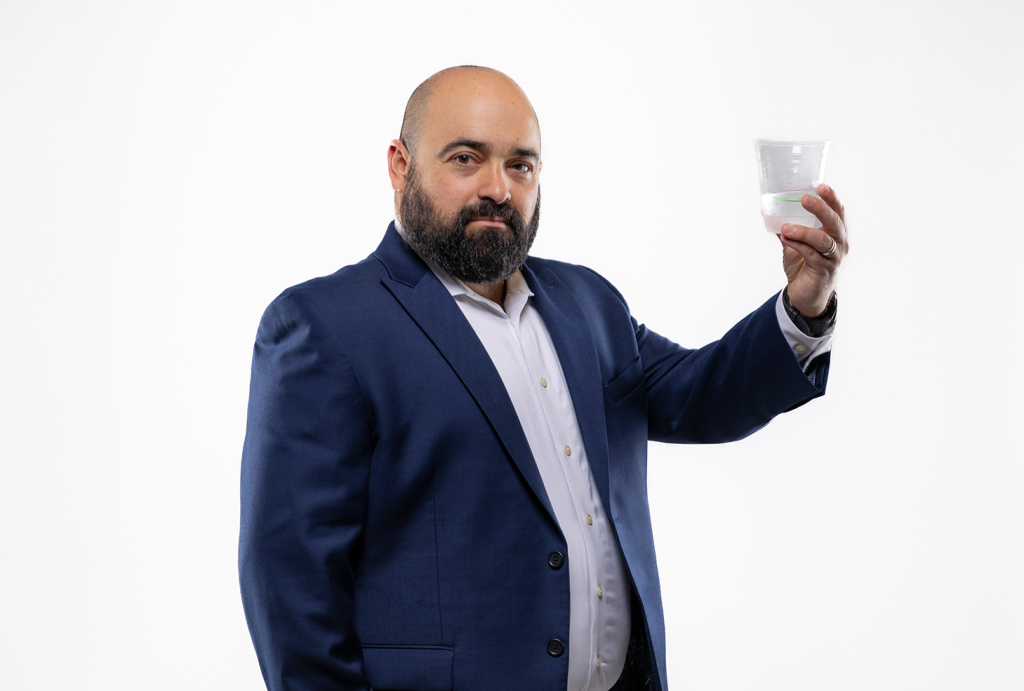Turning the Tide on Toxins
Empowering the next generation to solve complex water challenges and protect global health

Associate Professor of Chemistry Justin Clar
How often do you think about where your water comes from — or where it goes after you use it? In industrialized countries like the United States, the ease of turning on the tap for clean water often obscures the intricate systems behind it. Delivering safe drinking water and managing wastewater requires immense chemistry and engineering. Scientists, engineers and public officials work tirelessly to ensure water safety. In many cases, this involves monitoring and removing new and emerging threats in the water treatment process.
One of the most concerning classes of emerging contaminants is per- and polyfluoroalkyl substances, known as PFAs. As a teacher and mentor, I strive to transform student learning by connecting classroom knowledge to real-world problems like this one.
Known as “Forever Chemicals” because of their high stability, pfas are synthetic chemicals used in everyday items like plastics, food packaging and firefighting foams due to their resistance to heat, oil and water. Their persistence in the environment has caused widespread contamination, particularly in drinking water. Linked to health issues such as high cholesterol, increased risk of pregnancy-induced hypertension, thyroid disease and cancer, PFAs contamination has become a pressing concern. This is especially relevant in our community in North Carolina, because of the chemicals’ prevalence in the Cape Fear River basin, which provides drinking water to nearly 1 million people. Recent U.S. regulations now require public utilities to meet strict PFAs treatment goals within five years.
My academic interest in PFAs began in 2018 with BNNano Inc., a local company pioneering boron nitride nanomaterials. Intrigued by the environmental applications of their material based on its high adsorption capacity and phototactic activity, I saw a learning opportunity for my students.
As a teacher and mentor, I strive to transform student learning by connecting classroom knowledge to real-world problems like this one.
In the past several years, I’ve worked with Elon biochemistry undergraduates including Otto Fisher ’23, Amaya Sheffield ’24 and Grace London ’25, who have developed PFAs treatment systems using boron nitride materials, demonstrating the effectiveness of these materials in water treatment. These projects embody a systems approach to problem-solving, fostering resilience through trial and error. Students learn that failure isn’t a dead end but rather a guide to refining solutions.
I instill this approach in my teaching, including my Environmental Chemistry course, where students are presented with a case study on a contaminated site and small groups are tasked with researching and developing a multi-step remediation solution. After receiving feedback from me and their peers, students vote on the solution they feel is the most scientifically sound, cost effective and sustainable. These experiences allow students to shift from reading about science to creating new knowledge.
My hope for each of my students is they graduate with the understanding that they have the ability and ingenuity to solve the world’s most complex problems. This aligns with Elon University’s mission to prepare students to be global citizens and informed leaders motivated by concern for the common good.

